First step for Bloomington-Meridiam internet deal OK’d, as current broadband companies ask: Why?
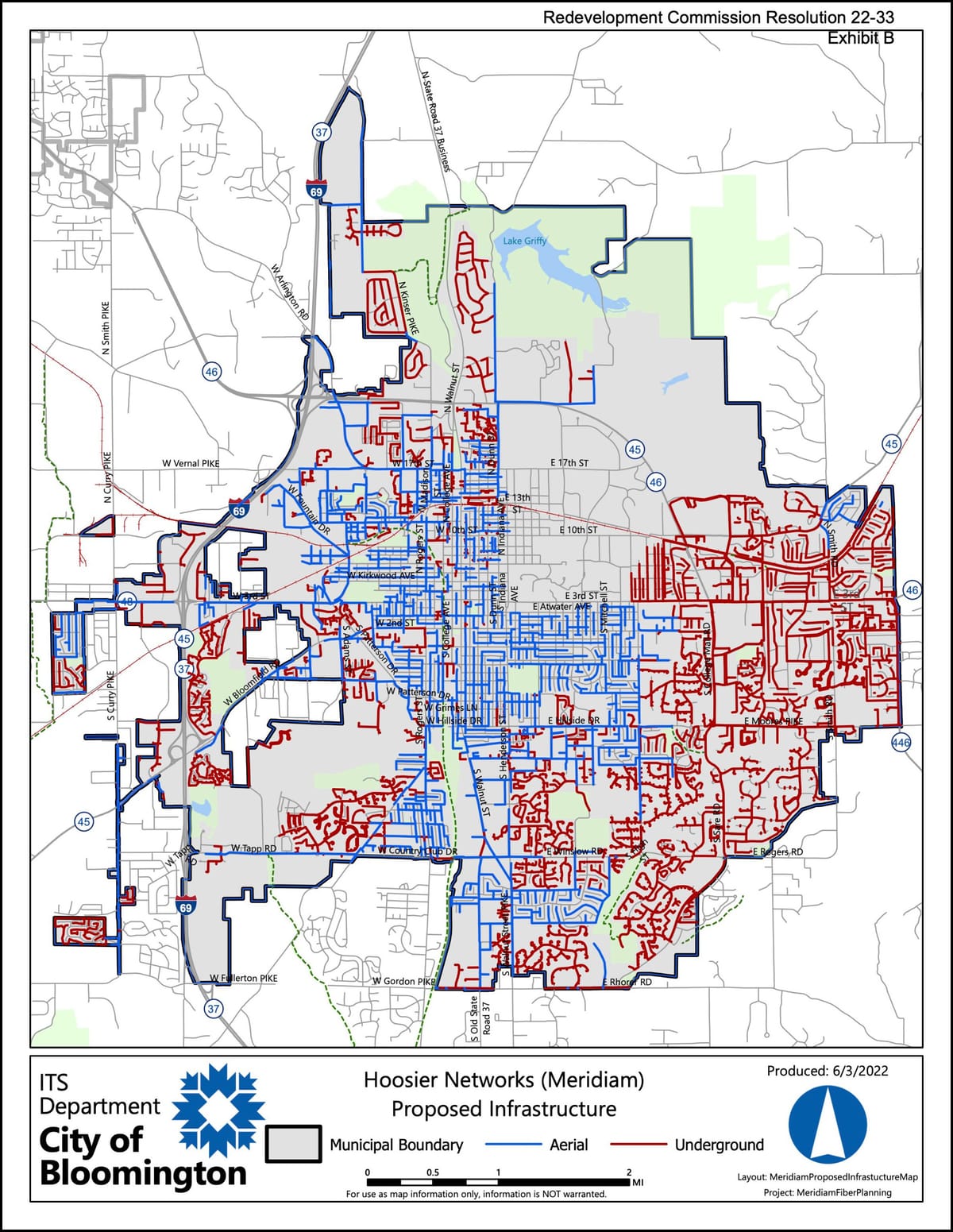
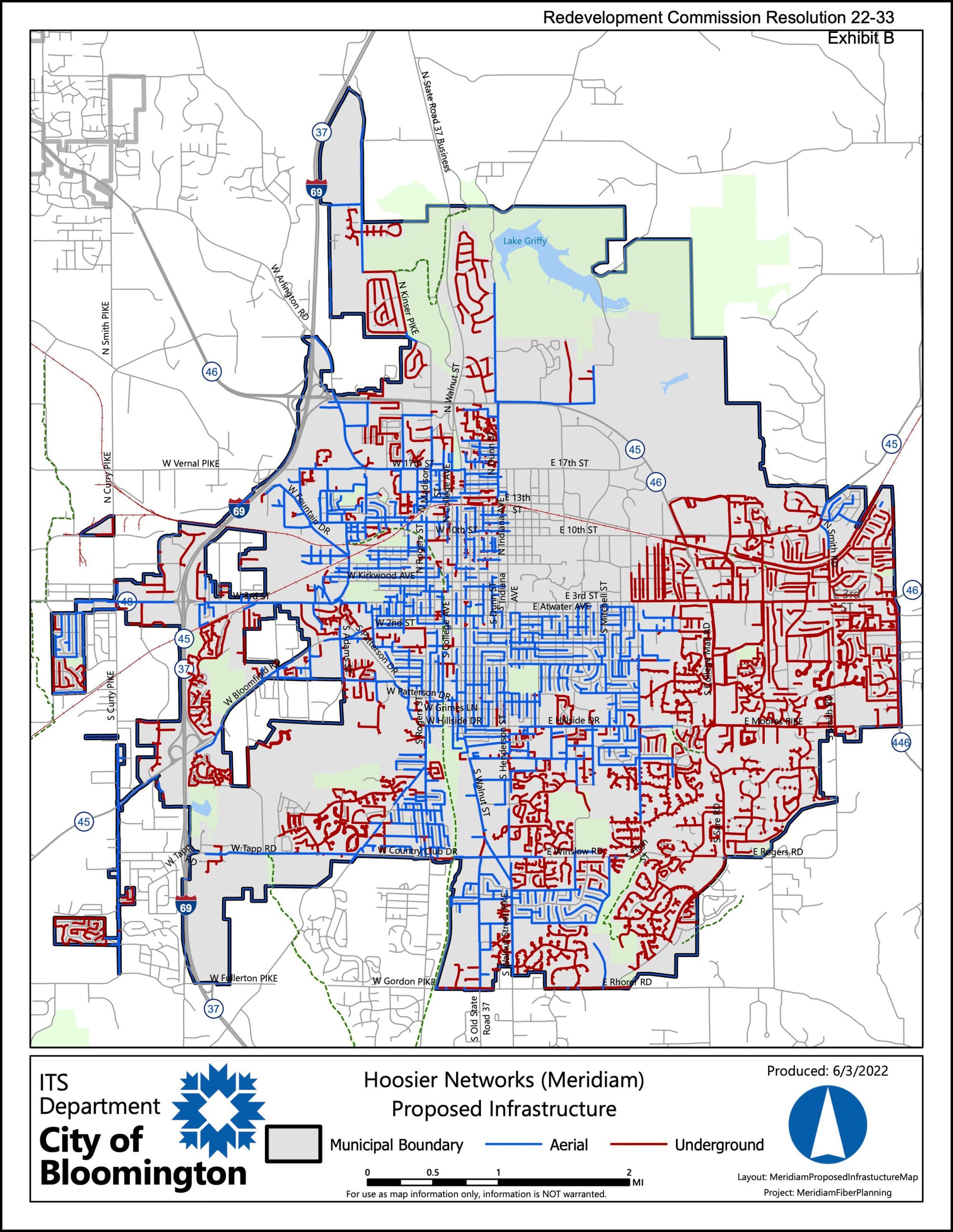


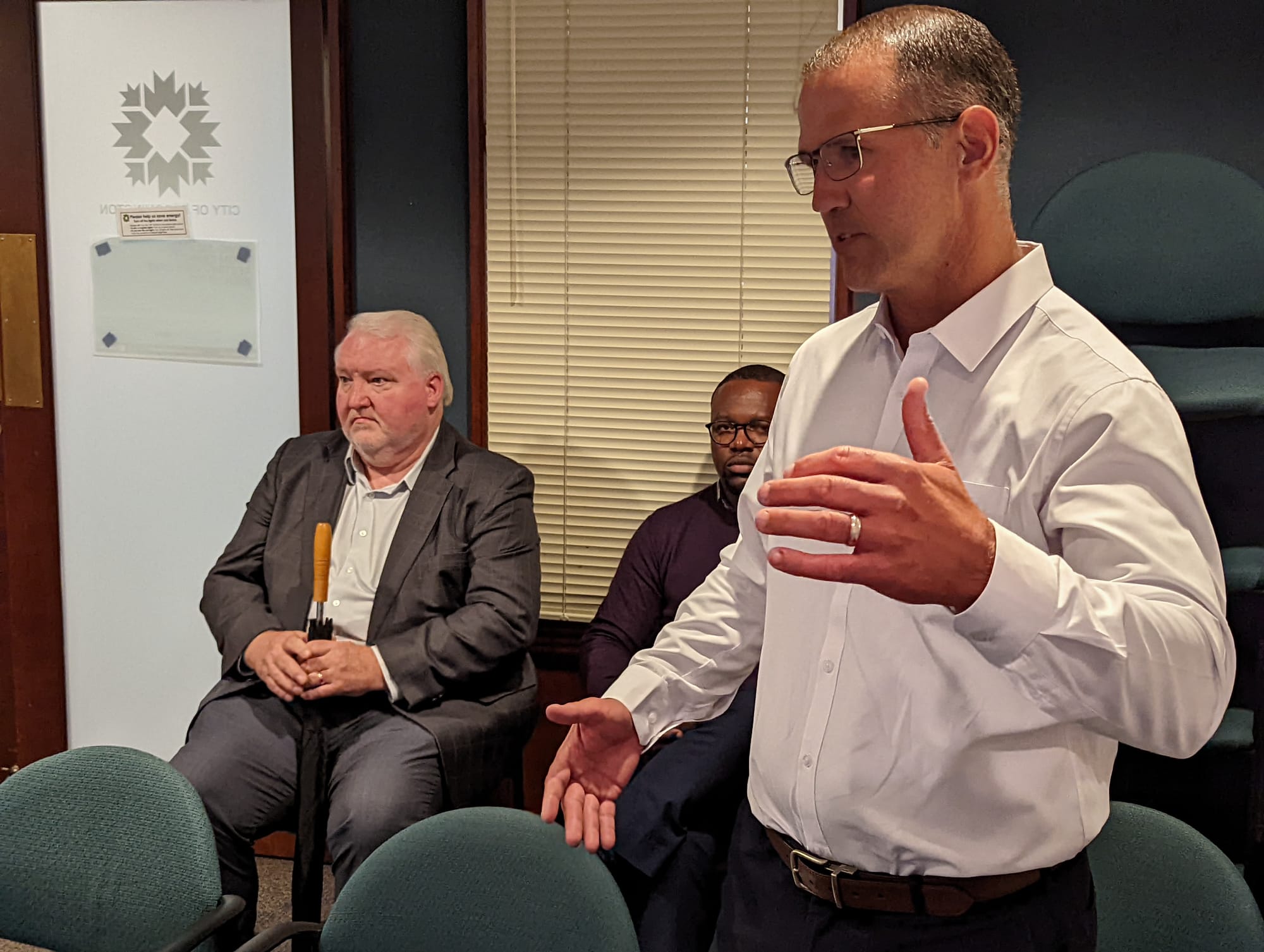
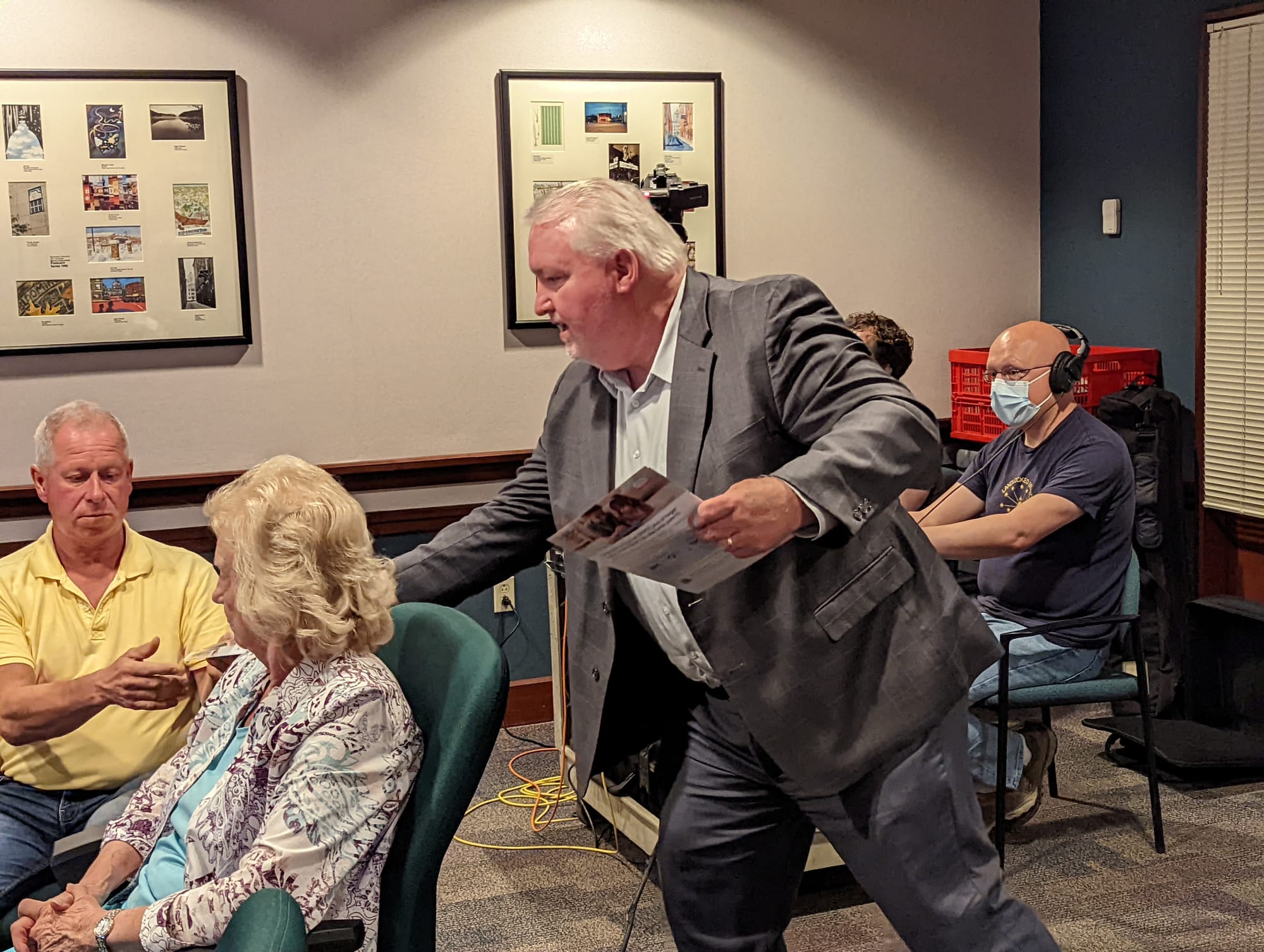
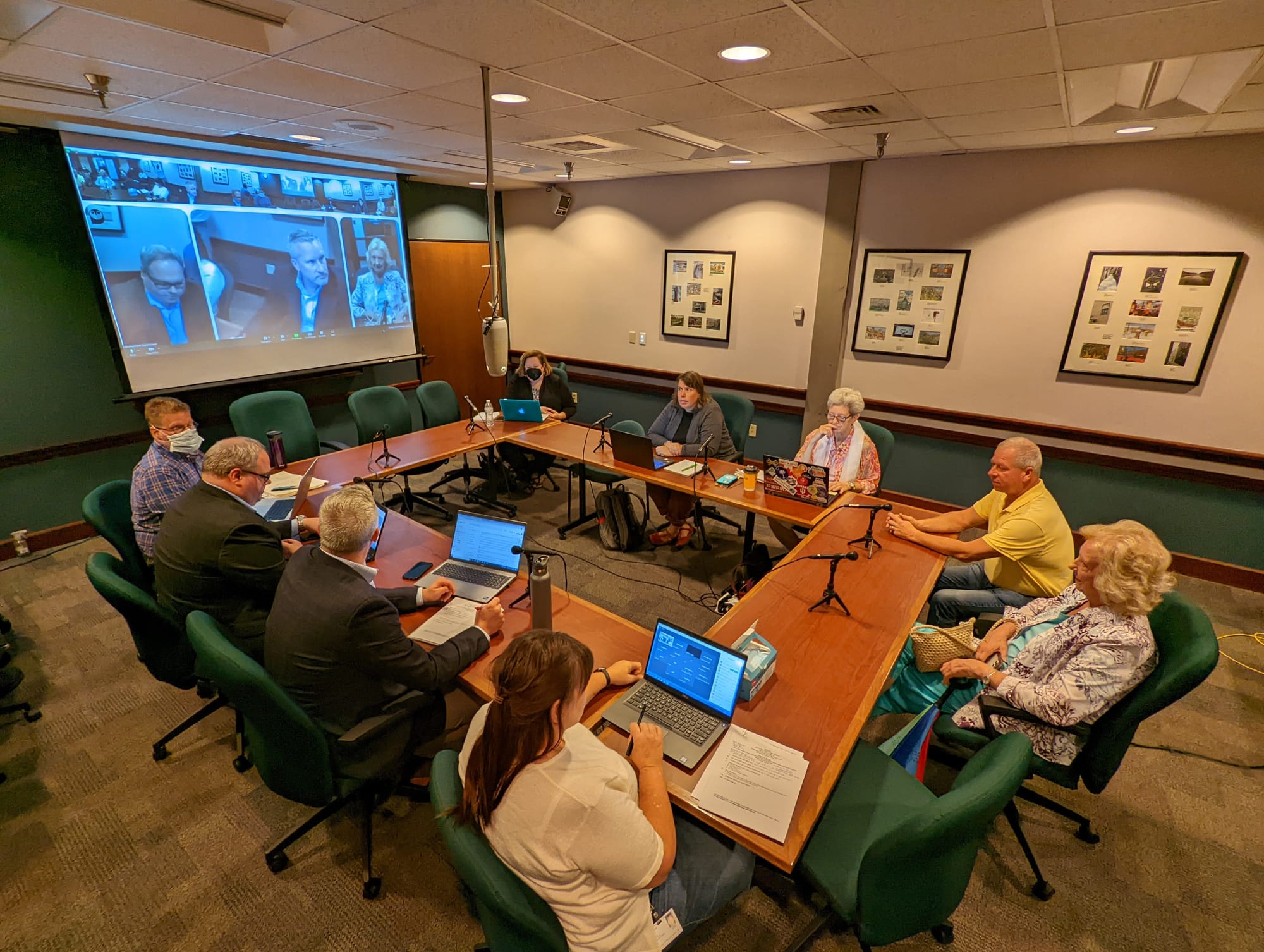
On Monday, the first step towards a $50 million high-speed internet fiber deal, between Bloomington and the Paris-based infrastructure firm Meridiam, got a 4–0 vote of approval from the city’s redevelopment commission (RDC).
The question in front of the RDC was a resolution that declares an economic development area, designating it as a TIF (tax increment finance) area, and approving an economic development plan.
The idea is to rebate about $14.4 million in personal property tax to Meridiam over the course of 25 20 years. Under the agreement, which is not yet finalized, Meridiam will build and operate a fiber-to-the-home network as an open access platform, which eventually any internet service provider (ISP) can use. That’s after an exclusive five-year period for the initial ISP.
The timeline now calls for consideration of the TIF area by three other public bodies, with three votes planned on three successive days: Bloomington plan commission (June 13); Bloomington economic development commission (June 14); and the Bloomington city council (June 15).
The question will need to be considered and adopted by the Bloomington RDC a second time. The RDC’s confirmatory resolution is supposed to get a vote on July 5.
In mid-November last year, Bloomington announced that it had about six weeks earlier signed a letter of intent (LOI) with Meridiam. That LOI contemplated a signed master development agreement (MDA) inked by the end of the year. The signing of that deal looks like it is still a few weeks away.
The RDC had already voted last Tuesday (May 31) on the same declaratory resolution that was adopted on Monday this week. The tally on last week’s vote was 2–1. But that meant the motion failed. That’s because a majority on the five-member commission is defined under state law and under local ordinance as three, not a majority of those present and voting.
The glitch at last Tuesday’s (May 31) RDC meeting meant that adoption of the declaratory resolution was delayed until Monday. At Monday’s meeting, the RDC used a procedure under Robert’s Rules called “renewal” of a question to revisit the question.
The delay gave RDC president Cindy Kinnarney the chance to ask questions—she was not able to attend last week’s meeting. It also gave representatives from Comcast and the Indiana Cable Broadband Association a chance to weigh in against the proposal.
Some of the key selling points of Meridiam’s planned high-speed network include: 1 Gigabit symmetric upload/download speeds; at least 85 percent coverage in the city of Bloomington; and a zero-cost program for low-income residents.
During public comment, Matt Kelley, who’s director of government affairs for Comcast, talked about his own company’s offerings. The Comcast network offers 1.2 Gigabit download speeds, Kelley said. And Comcast covers more than 98 percent of Bloomington, Kelley said.
Kelley continued, saying that since 2011 Comcast has offered a program called Internet Essentials for low-come residents, at $10 a month. Now, Kelly added, Comcast participates in the FCC’s Affordable Connectivity Program, which means customers receive the service at zero cost.
Following Kelley with a turn of public commentary was Tom Havens, executive director of the Indiana Cable Broadband Association. Havens compared the situation to an intersection of roads where three of the corners have gas stations—and the city of Bloomington wants to subsidize a gas station on the fourth corner.
Havens described his puzzlement to commissioners: “We’ve been scratching our heads.” He continued, “We agree that citizens need access, and they do have access.” Havens added, “So the question becomes, why are we doing this?”
Bloomington IT director Rick Dietz picked up on the gas-station analogy when he responded to Kelley and Havens. Dietz said, “If there’s a new gas station that’s coming in, and the city wants to see electrification of vehicles, it might support the station that offers charging.”
At Monday’s meeting, Kinnarney asked a range of questions. She wanted to know how Meridiam was planning to bridge the gap in funding between the $50-million investment that has been described, and the $14.4 million in TIF revenue.
Nick Phillips, who is senior investment director at Meridiam, told Kinnarney that the revenue stream that drives the project is Meridiam’s cut from the internet service provider (ISP)—which will have exclusive access to the fiber network for an initial five-year period.
Asked by Kinnarney how many subscribers Meridiam needs to make the model successful, Phillips gave the same answer as he did last week, which was that he couldn’t say, with press in the room, because it is a “confidential trade secret.”
The identity of the initial ISP that will have exclusive access to the network was also not disclosed on Monday, because the ISP is not yet under contract, Phillips said.
One improvement to the documentation of the project won praise from RDC members on Monday. The new map includes not just the underground fiber conduit, but also the aerial fiber that Meridiam plans to string between utility poles. The web-like path of the fiber infrastructure is what gives the associated tax increment finance area the “spider TIF” moniker.
Commissioner Deborah Myerson asked about an apparent pattern she could discern in the map, suggesting that aerial fiber was the preferred choice for multi-family housing areas. Scott Layman, Meridiam’s director of digital infrastructure, told Myerson it is just a matter of how fast the fiber can be installed, aesthetics and convenience and cost.
Layman described how the cost of running fiber underground is different in different parts of the city. Another consideration is how much disruption the underground construction would cause. Sometimes it’s much easier to use the aerial option, particularly in downtown districts, Layman said.
Meridiam is also now pursuing similar fiber-to-the-home networks in other nearby cities—Columbus, Martinsville, and Shelbyville. At last week’s meeting, Philips indicated that deals in those other cities depended on coming to final terms with Bloomington. Phillips called Bloomington the “fulcrum” for the projects in central Indiana.
The additional RDC meeting this week to consider the first declaratory resolution on the “spider” TIF stemmed from a botched understanding of procedure at last Tuesday’s meeting.
Commissioners participated in the vote believing that a 2–1 tally would mean adoption, because of the incorrect advice given before the vote by assistant city attorney Larry Allen. But a majority on the five-member commission is defined under state law and under local ordinance as three—not a majority of those present and voting, as Allen had advised.
Commissioner Randy Cassady dissented only because he wanted all four currently serving commissioners to be present for the vote. A fifth seat is currently vacant.
Before last Tuesday’s meeting ended, Allen was alerted to his mistake by the city’s outside legal counsel. That’s what caused the RDC to take up the question again on Monday.
The city council’s committee-of-the-whole will be considering its part of the required approval at its meeting on Wednesday (June 8) at 6:30 p.m. Here’s a link: Bloomington city council meeting information packet.




Comments ()